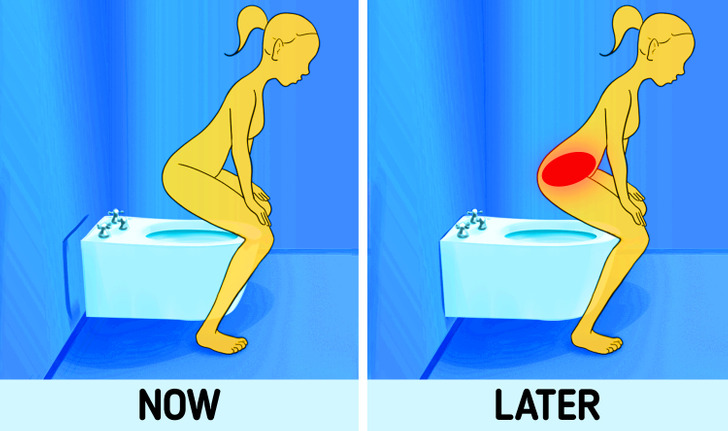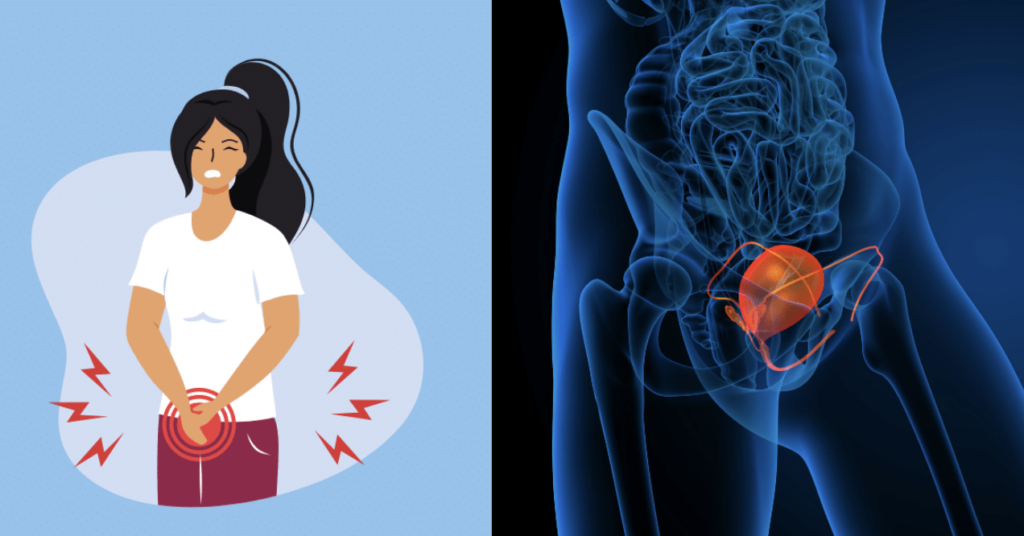When nature calls, our instinct is often to respond quickly and discreetly, especially in public restrooms. Yet, the common practice of squatting over the toilet seat—seemingly a hygienic choice—may have unintended consequences for your health. Let’s explore why this habit, though well-intentioned, might pose some surprising risks over time.
1. Increased Risk of Urinary Tract Infections

One significant concern with squatting over the toilet is its potential to elevate your risk of urinary tract infections (UTIs). When you squat, your pelvic floor muscles remain roughly 40% tensed. This persistent tension can prevent your bladder from fully relaxing, which might result in some urine being retained after you stand up. This residual urine creates an ideal environment for bacteria to flourish, thereby increasing your susceptibility to UTIs. These infections, while often treatable, can lead to discomfort and more severe health issues if not addressed promptly.
2. Persistent Urge to Urinate

Have you ever experienced a persistent urge to urinate shortly after using the restroom? This nagging feeling may be linked to the habit of squatting over the toilet. When you squat, you may not completely empty your bladder, leading to residual urine that can leak during sudden movements like sneezing, laughing, or coughing. This leakage not only causes embarrassment but also contributes to a continual sensation of urgency and discomfort, impacting your overall quality of life.
3. Gradual Weakening of the Bladder

Regular squatting over the toilet can lead to the weakening of your bladder over time. When your pelvic muscles are habitually tensed, it disrupts the natural relaxation process necessary for effective bladder contraction and emptying. This chronic tension can impair your bladder’s ability to function properly, potentially causing difficulties with urination, including incomplete emptying and an increased need to urinate frequently.
4. The Benefits of a Full Squat

Instead of partially squatting over the toilet seat, consider adopting a full squat position. By sitting lower on the toilet, you allow your pelvic and bladder muscles to relax more fully. This deeper squat helps align the urinary tract more effectively, promoting better bladder emptying. Embracing this position may enhance bladder health and alleviate some of the issues associated with partial squatting.
Conclusion
The next time you find yourself in a public restroom, it’s worth reconsidering the practice of squatting over the toilet. While it might seem like a more sanitary option, it could inadvertently affect your bladder health over time. Opting for a full squat or using toilet seat covers and sanitizing wipes might be more beneficial alternatives. Taking these small steps can make a significant difference in maintaining your bladder health.
We’d love to hear from you: Do you prefer squatting when using public restrooms? What other strategies do you use to stay comfortable and hygienic? Share your thoughts and tips in the comments below!
Sources: brightside; smartsite







